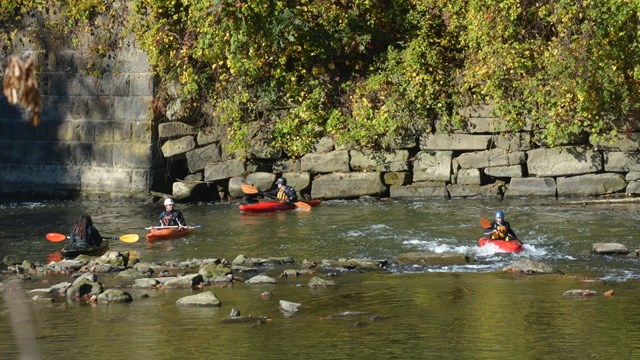Cuyahoga Valley National Park, although not widely known, has risen to become one of America’s 10 most popular national parks, drawing nearly 3 million visitors last year. Surprisingly, it surpassed renowned bucket-list destinations like Bryce, Glacier, and Grand Teton. However, the park’s current inviting and picturesque status was hard-won, as it has a tumultuous past.
Infamous for the Cuyahoga River catching fire multiple times, including a significant incident in 1969 in Cleveland, the park was initially not a desirable destination. Nevertheless, efforts to restore the valley have been ongoing, with the park set to celebrate its 50th anniversary in 2024. Pamela Barnes, the park’s community engagement supervisor and public information officer, expressed pride in the transformation, saying that those returning to the area might be astounded by the positive changes.
Cuyahoga Valley National Park boasts a unique distinction as the epicenter of the modern 20th-century environmental movement. The international attention drawn to the polluted Cuyahoga River led to the creation of the Clean Water Act and the Environmental Protection Agency. The park’s story revolves around restoration, with the once undesirable river now an inviting attraction for visitors.
Among the places showcasing significant change is the Beaver Marsh. This area was formerly a scrapyard but has now become a thriving wetland that supports over 200 bird species, both resident and migratory.
The park is conveniently situated between Akron (approximately 7 miles away) and Cleveland (less than 20 miles away). Spanning 33,000 acres, with 125 miles of trails, it serves as a lush oasis amid urban environments, offering a surprise to many within the metropolitan area. Travelers can access the park from either Cleveland Hopkins International Airport or Akron-Canton Airport, with the former being slightly closer.
Unlike some national parks, Cuyahoga Valley does not charge entry fees or require reservations. It welcomes visitors year-round, with each season offering unique attractions. While summer remains a popular time for visits, the fall presents a spectacular display of colors, especially from the Ledges overlook. Winter opens up opportunities for cross-country skiing and downhill skiing at two privately-run ski resorts within the park’s borders. The park provides snowshoes for borrowing and features fantastic sledding hills. Spring is perfect for birdwatching and hiking.
For those planning a visit, spending a day or a weekend is sufficient to experience the park’s highlights, including the Beaver Marsh and the famous Brandywine Falls, a 60-foot waterfall accessible to all through a short walk on a wooden boardwalk. Visitors are encouraged to stop by the Boston Mill Visitor Center at the beginning of their trip for guidance from knowledgeable rangers.
Cuyahoga Valley National Park has a rich Native American history. The park’s namesake river was called “Ka-ih-ogh-ha” or crooked by the indigenous people. Various tribes, including Paleoindians, Archaic, and Woodland peoples, lived in the area for thousands of years. The last longstanding Native inhabitants, the Whittlesey people, left the valley in the 1600s, preceding European exploration. Subsequently, other tribes, such as the Ottawa, Ojibwa, and possibly Mingo, sought refuge in the valley after being displaced from their lands in the 1700s but were eventually driven out by the early 1800s.
Cuyahoga Valley National Park stands as a testament to the triumph of environmental restoration and preservation, drawing countless visitors to its once-troubled but now enchanting landscapes.


